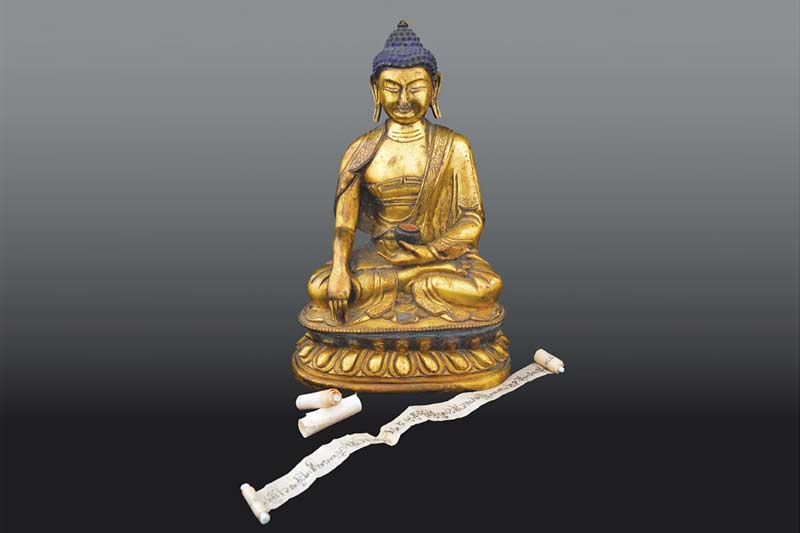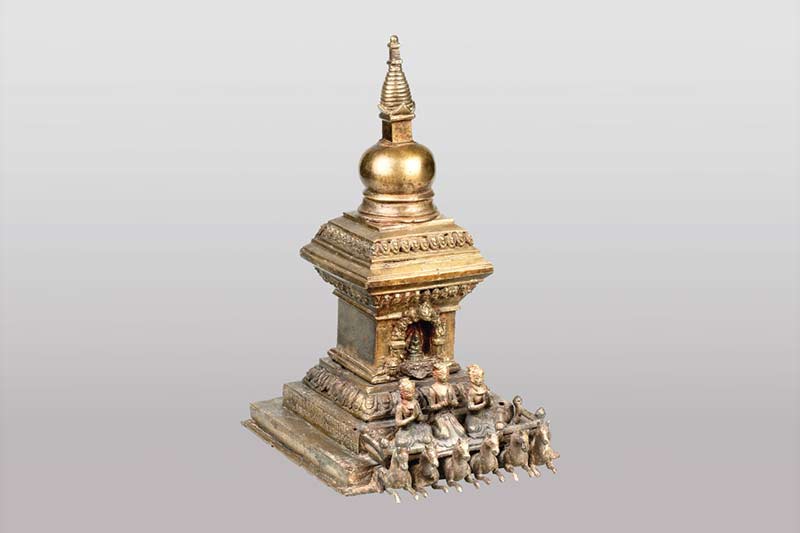The art of Himalayas
South East Asian Art Collection
The most difficult survival
The most difficult survival on the precipitous Himalayas favoured the development in Nepal and Tibet of a powerful popular faith in animistic-shamanistic beliefs that deify and demonify natural phenomena. Later on, this local faith was combined with the Indian worldviews of Hinduism and Buddhism, resulting in the creation of a religious system with complicated meanings, occult practices and countless deities.
Nepal, bordering India, was influenced very early from both Buddhism as well as Tantrism, a Hinduism sect which is based on the worship of Shakti, the deified female energy. Through Gandhara, Tibet received the Mahayana (Great Vehicle) Buddhism, which gradually resulted in the Vajrayana (Diamond Way) Buddhism. From the 11th century onwards the creation of monk orders in which priests (Lamas) play a dominant role, lead to the establishment of the term Lamaism to describe Tibetan Buddhism.
Nepal and Tibet figurines
Nepal and Tibet figurines are blessed during religious rituals. The believers place inside the figurines coins, beads, seeds and paper cylinders with prayers as ex-votos. Each deity may be depicted simultaneously in peaceful forms to ensure redemption or in hideous incarnations, in order to ward off enemies of the faith.
The wild features of female deities express their life-giving (and at the same time destructive) energy, which is eternally recycled. Respectively, male deities that are depicted with fearsome features are the protectors of the faith, fighting for it to prevail. Gods are depicted in complexes of perfect harmony together with their companion, Shakti, which represents their female aspect. This union symbolises the identification of mind and matter which is the means to achieve the ultimate wisdom.
The catalytic effect of Buddhism
The catalytic effect of Buddhism led to the building of incalculable religious monuments (stupas), as well as monasteries-fortresses with frescoes, sculptures and painted banners (Thangka’s).
Nepalese and Tibetan stupas consist of a rectangular base on which are placed geometric structures.
From the bottom up, they symbolize earth, water, fire,air and the union of sun and moon in mid-air, while at the same time -as an ensemble- they represent Buddha in the meditation position.
Thangka’s ritual banners
Thangka’s are ritual banners, which are unrolled during meditation and religious ceremonies. They depict holy figures, mandalas (diagrams of cosmic order), or monasteries, and are painted according to strict iconographic rules. Ιt is difficult to trace the works, however, while in Tibetan Thangka’s the influence of Chinese landscape painting is particularly ma-nifest, in Nepalese works it is the bright Indian colours that are prevalent.
For the creation of Thangka’s they used silk or cotton fabric, tempered with limewater and fish-glue, which was then made smooth using oysters. After that the material was painted on with pulverised plant or mineral colours mixed with limewater and gluten and finally fixed on a larger piece of cloth.
SAKYAMUNI
BUDDHA

PILGRIMS AND STUPA ON A HORSE-DRIVEN PLATFORM


